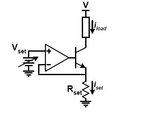Bjtpower
Full Member level 5
Hello friends
I look forward to build a circuit which will provide me a constant current to end application.
input voltage:60v
Constant current will be 300mA
Look forward your idea towards implementations
Regards
Marx
I look forward to build a circuit which will provide me a constant current to end application.
input voltage:60v
Constant current will be 300mA
Look forward your idea towards implementations
Regards
Marx



